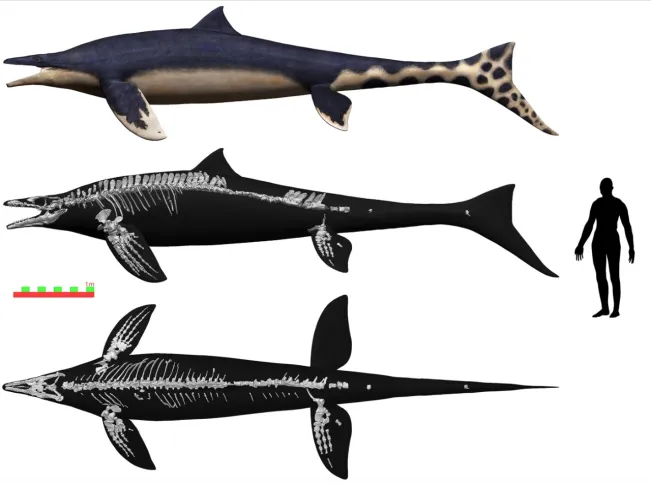
The researchers described the remains of ancient sea “dragons” that are surprisingly well preserved – predatory underwater reptiles of mososaurs. The fossil, named Wakayama Soryu, meaning blue dragon, was discovered in Wakayama Prefecture in 2006. This is the most complete mosasaur skeleton ever discovered in the Northwest Pacific.
Study co-author Akihiro Misaki of the University of Cincinnati discovered the bones when he was looking for ammonites (invertebrates) in the sandstone. Instead, he found a strange dark fossil. Careful analysis showed that it was a vertebrae. Further excavations led to the discovery of an almost perfect mosasaur, which is about 72 million years old.

Paleontologists from the University of Cincinnati have carefully studied the fossils and discovered unusual physical features of this ancient marine predator. This mosasaur was distinguished by its impressive size, comparable to a great white shark. It had “extra-long hind flippers” that probably facilitated movement in combination with an elongated tail.
The fossil mesosaur, which scientists named Megapterygius wakayamaensis, had a shark-like fin on its back. Researchers believe that the fin helped the reptile move quickly and accurately in the water. This distinguishes it from other mosasaurs.

Researchers believe that the giant creature had almost “binocular vision,” which enhanced its skills as a formidable hunter. Mosasaurs were apex predators and ruled the ancient oceans from about 100 to 66 million years ago. Their existence came to an end due to the same mass extinction that wiped out almost all dinosaurs.

